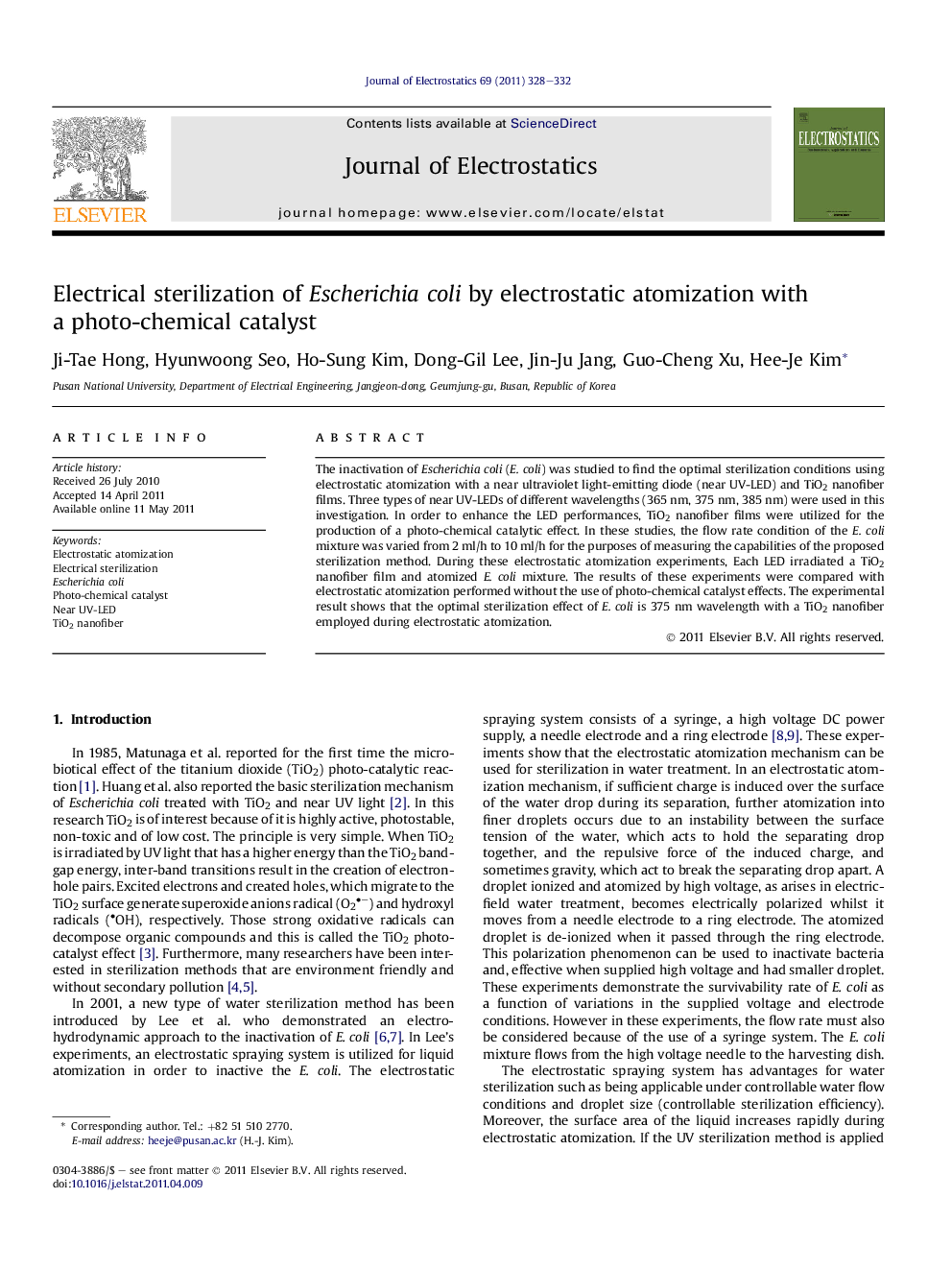| Article ID | Journal | Published Year | Pages | File Type |
|---|---|---|---|---|
| 727097 | Journal of Electrostatics | 2011 | 5 Pages |
The inactivation of Escherichia coli (E. coli) was studied to find the optimal sterilization conditions using electrostatic atomization with a near ultraviolet light-emitting diode (near UV-LED) and TiO2 nanofiber films. Three types of near UV-LEDs of different wavelengths (365 nm, 375 nm, 385 nm) were used in this investigation. In order to enhance the LED performances, TiO2 nanofiber films were utilized for the production of a photo-chemical catalytic effect. In these studies, the flow rate condition of the E. coli mixture was varied from 2 ml/h to 10 ml/h for the purposes of measuring the capabilities of the proposed sterilization method. During these electrostatic atomization experiments, Each LED irradiated a TiO2 nanofiber film and atomized E. coli mixture. The results of these experiments were compared with electrostatic atomization performed without the use of photo-chemical catalyst effects. The experimental result shows that the optimal sterilization effect of E. coli is 375 nm wavelength with a TiO2 nanofiber employed during electrostatic atomization.
► Electrostatic atomization and the photo-chemical catalyst effect are used as E. Coli sterilization study. ► We study sterilization efficiency of E. Coli by using an electrostatic spraying instrument, UV-LEDs and TiO2 nanofiber films. ► The condition of electrostatic atomization is optimized sterilization efficiency adjusting size of droplet with E. Coli. ► We study about photo-chemical catalyst effects for efficiently sterilization of E. Coli on electrostatic atomization. ► Three types of near UV-LED showed different sterilization efficiencies and 375 nm wavelength UV-LED shows best results for E. Coli sterilization on this study.
